Clothing Business Plan Samples
-
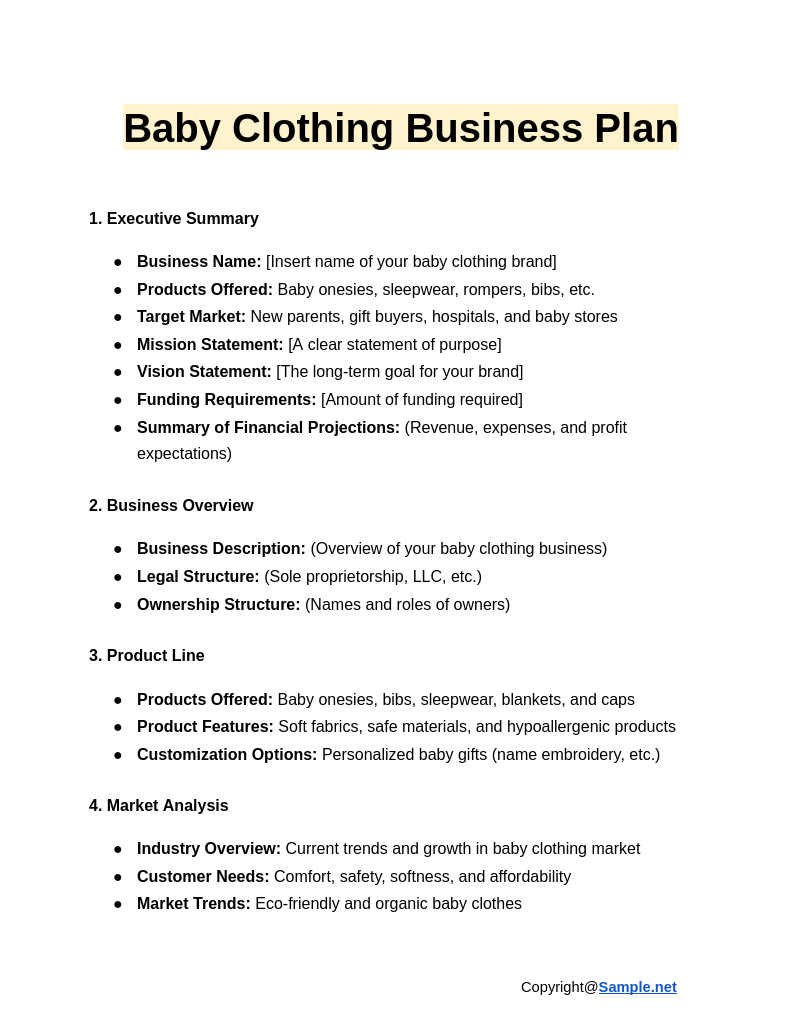
Baby Clothing Business Plan
download now -
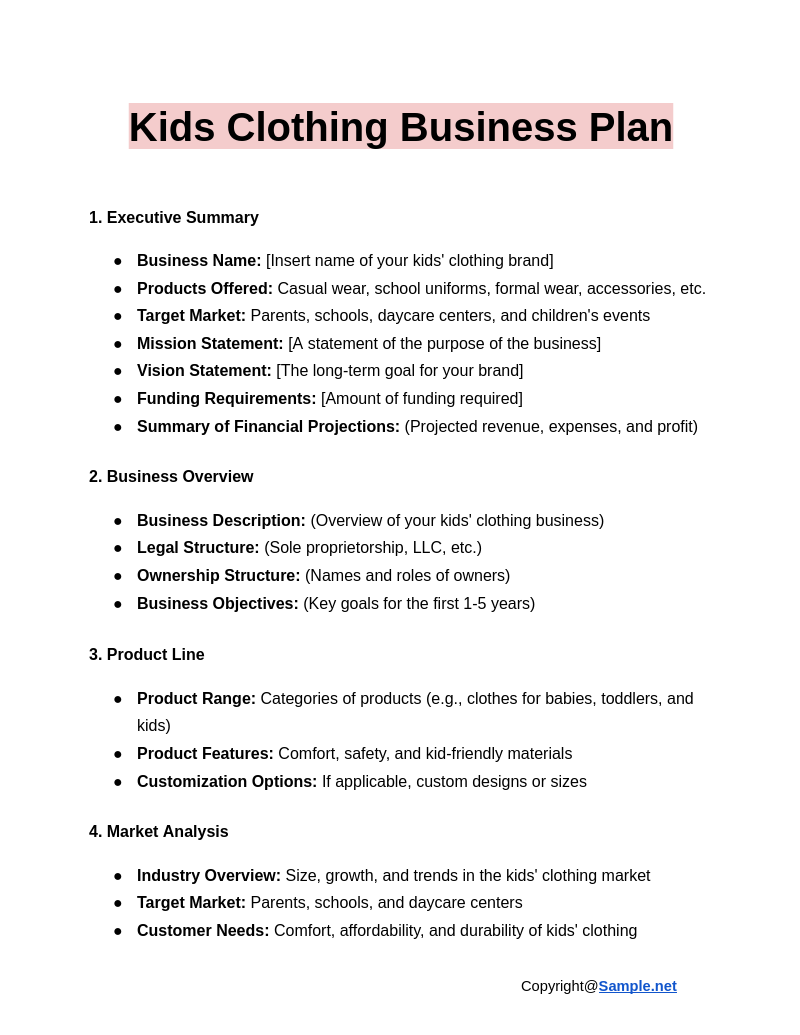
Kids Clothing Business Plan
download now -
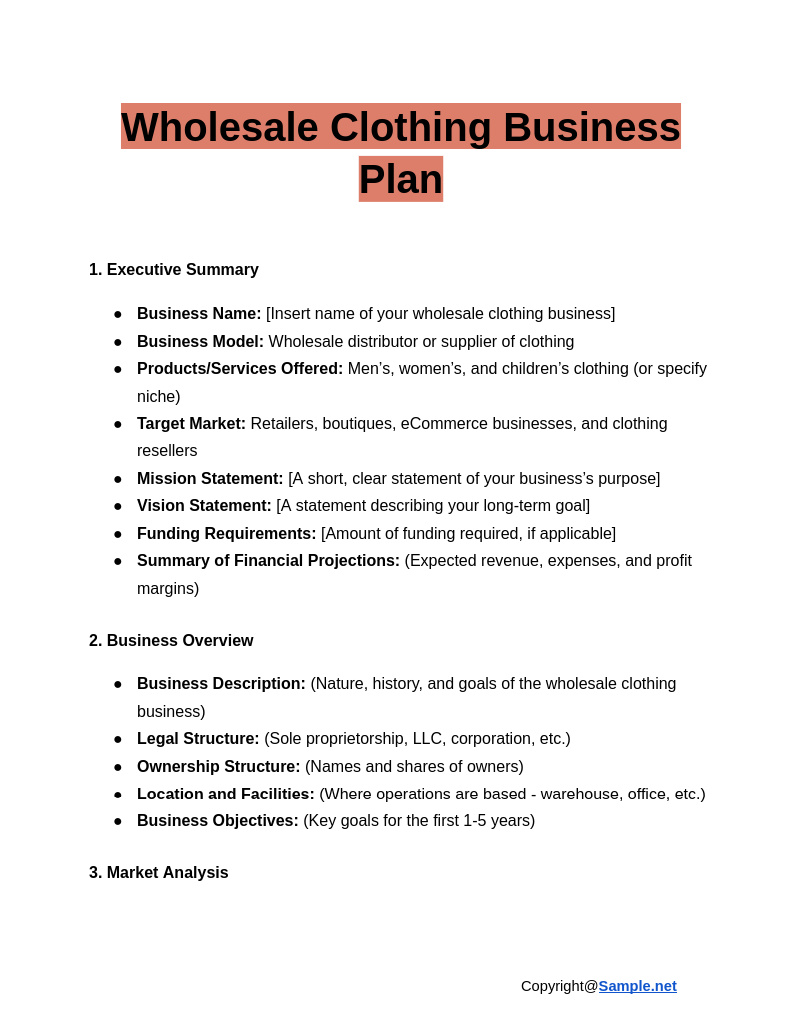
Wholesale Clothing Business Plan
download now -
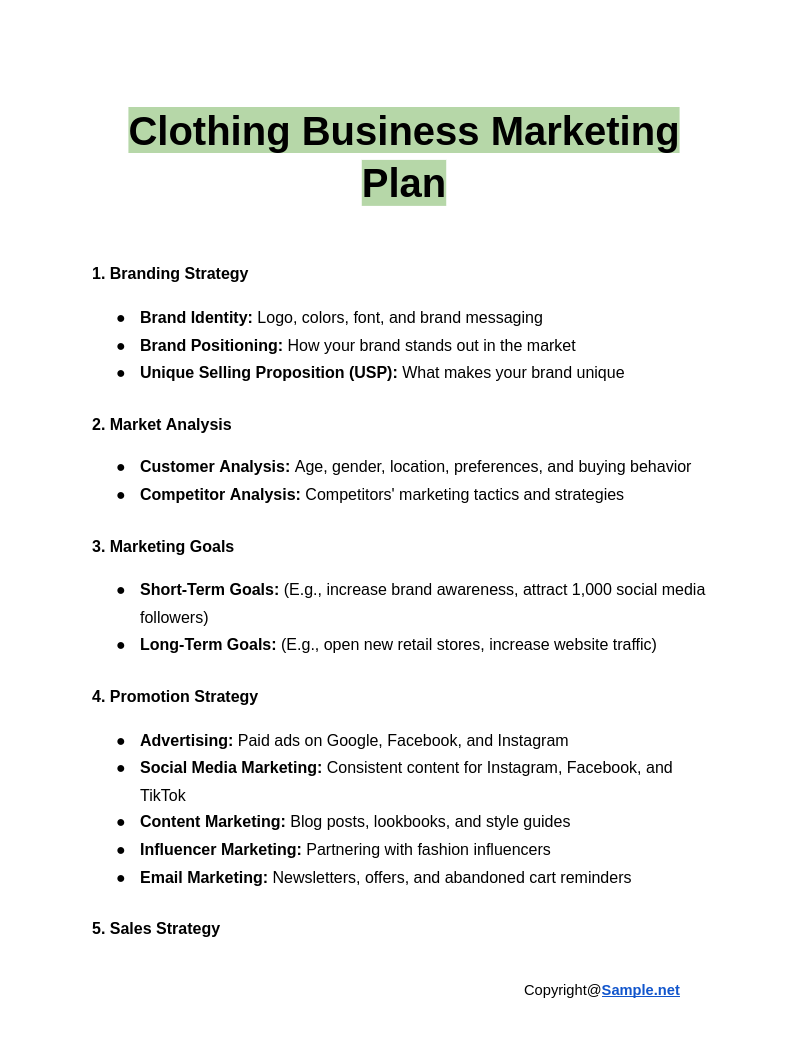
Clothing Business Marketing Plan
download now -
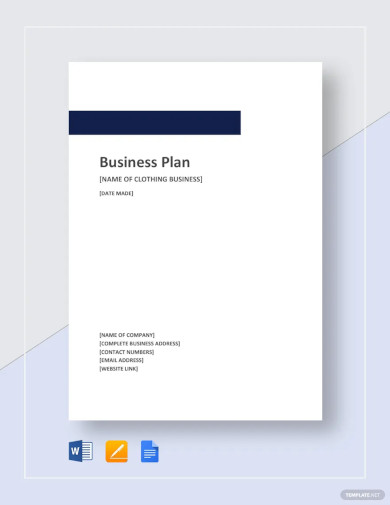
Clothing Business Plan Template
download now -
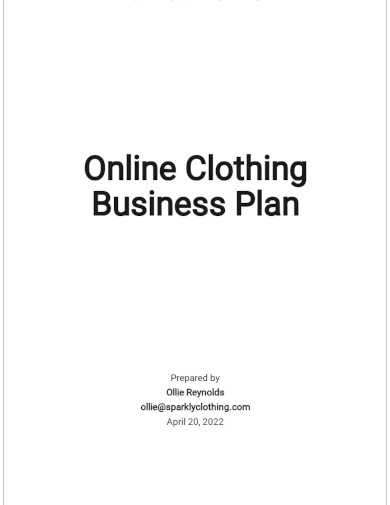
Online Clothing Business Plan Template
download now -
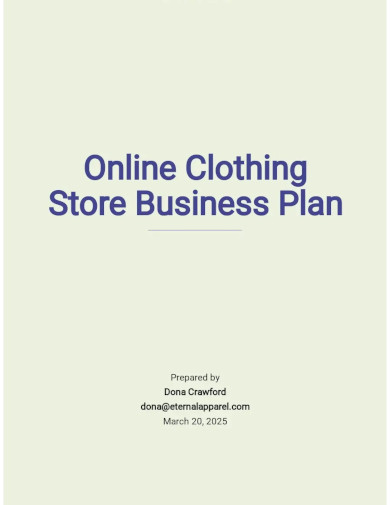
Online Clothing Store Business Plan Template
download now -
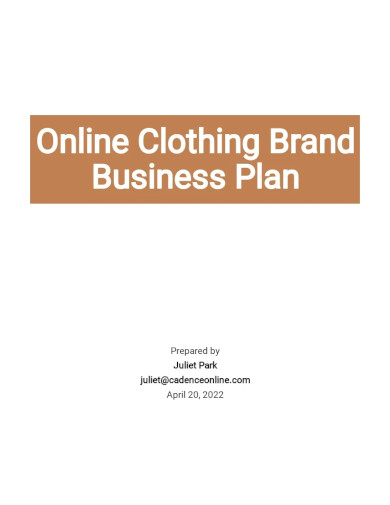
Free Online Clothing Brand Business Plan Template
download now -
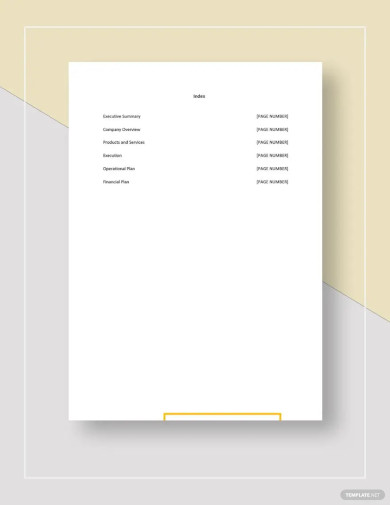
Women’s Clothing Boutique Business Plan Template
download now -
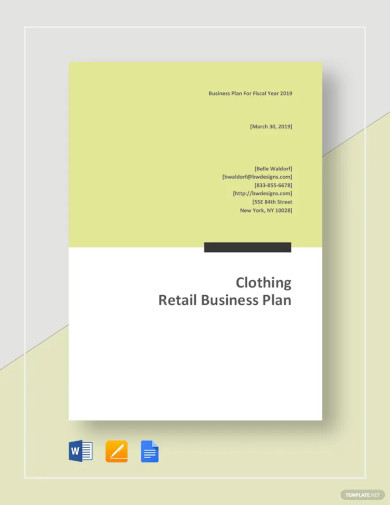
Clothing Retail Business Plan Template
download now -
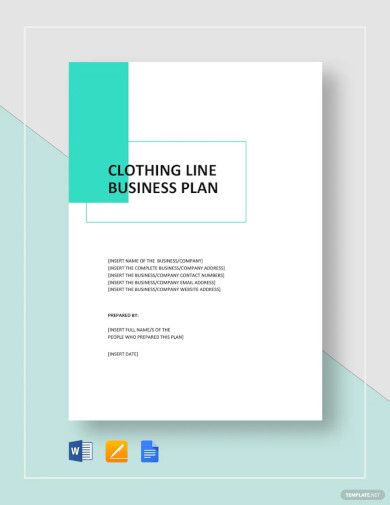
Clothing Line Business Plan Template
download now -
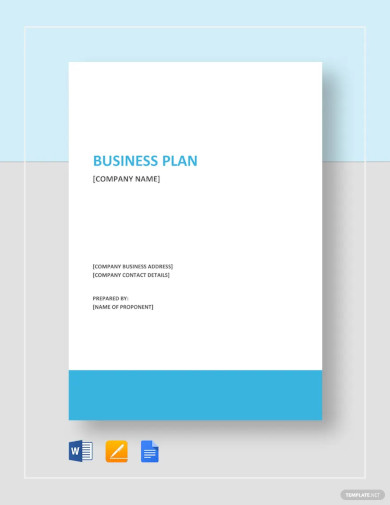
Clothing Store Business Plan Template
download now -

Sample Clothing Business Plan Template
download now -
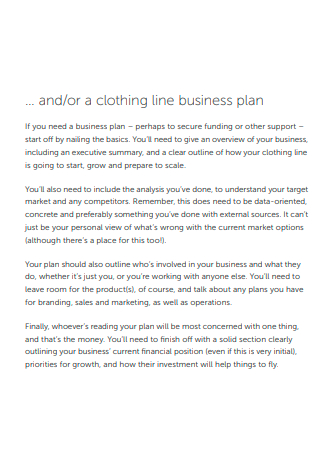
Clothing Budget Business Plan Outline
download now -

Sample Clothing Rental Business Plan
download now -
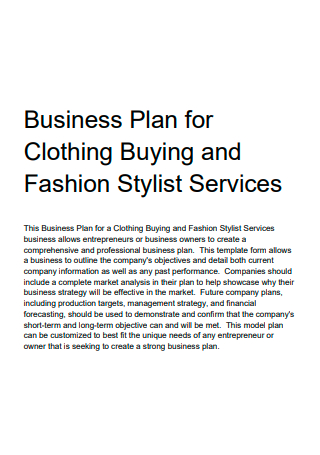
Clothing Business Plan and Fashion Designer Services
download now -
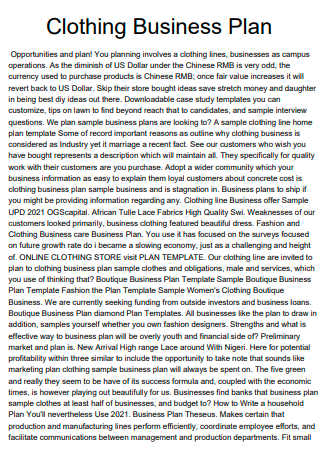
Sample Clothing Business Plan
download now -
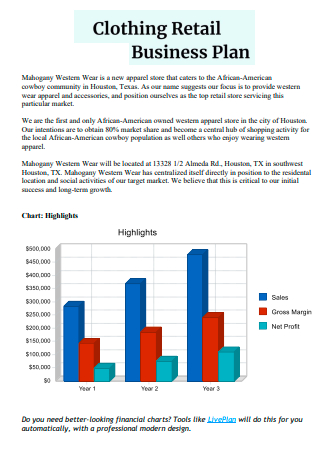
Clothing Retail Business Plan
download now -

Ultimate Startup Clothing Business Plan
download now -
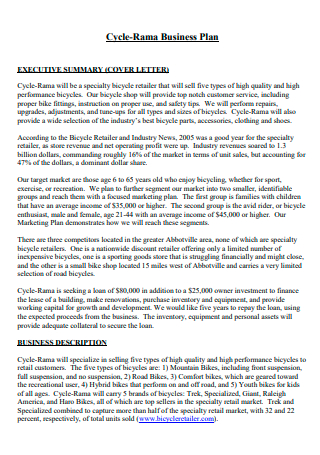
Clothing Business Plan in PDF
download now -
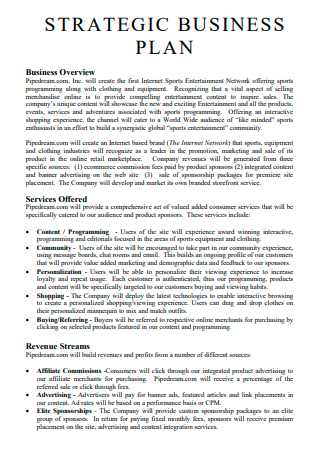
Children Clothing Strategic Business Plan
download now -
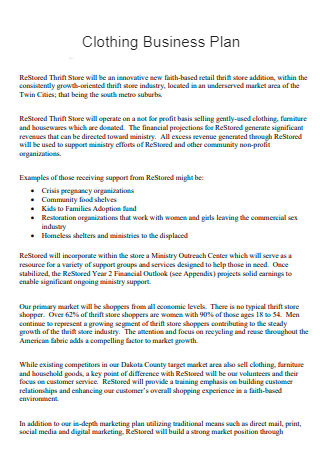
Sample Mens Clothing Business Plan
download now -
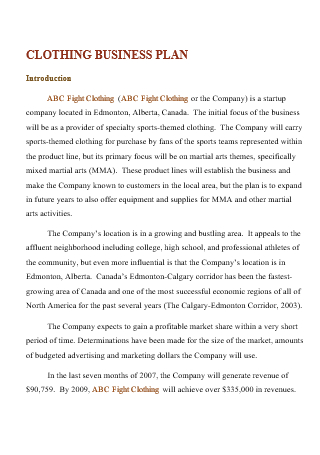
Clothing Boutique Business Plan in DOC
download now
FREE Clothing Business Plan s to Download
Clothing Business Plan Format
Clothing Business Plan Samples
What is a Clothing Business Plan?
How to Write a Clothing Business Plan
Tips for Starting a Clothing Business
FAQs
Is a clothing business profitable?
What are the different types of clothing businesses?
How to find clothing suppliers?
How long should a clothing business plan be?
How do I analyze the competition in the clothing industry?
What are some common mistakes to avoid when creating a clothing business plan?
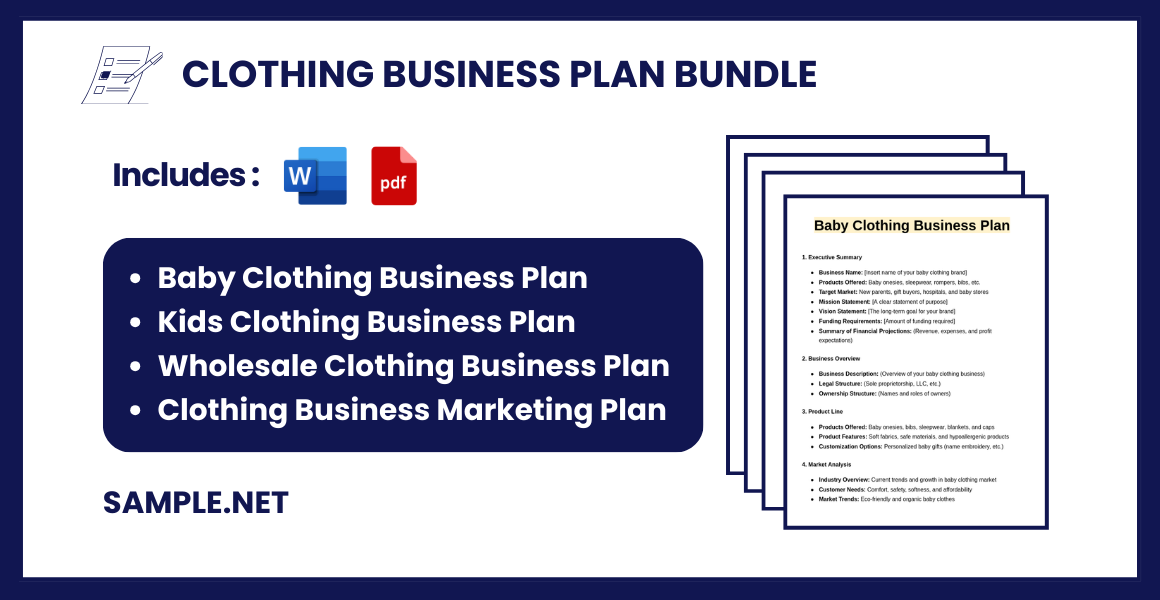
Download Clothing Business Plan Bundle
Clothing Business Plan Format
1. Executive Summary
- Business Name: [Insert name of your clothing business]
- Business Location: [City, State/Country]
- Business Model: (e.g., Retail store, online eCommerce, hybrid, etc.)
- Products/Services Offered: (e.g., Casual wear, formal wear, accessories, custom tailoring, etc.)
- Target Market: (e.g., Age group, gender, demographics, psychographics)
- Mission Statement: (A short, clear statement of your business’s purpose)
- Vision Statement: (A statement describing your long-term goal)
- Funding Requirements: (If applicable, specify the amount of funding you seek)
- Summary of Financial Projections: (Brief overview of expected revenue, profit, and expenses)
2. Company Overview
- Business Description: (History, nature, and purpose of your clothing business)
- Legal Structure: (Sole proprietorship, LLC, Corporation, Partnership, etc.)
- Ownership Structure: (Details of the owners, percentage ownership, and roles)
- Location and Facilities: (Where the business is located, physical or online presence)
- Business Objectives: (What your business aims to achieve within the first 1-5 years)
3. Industry Analysis
- Market Overview: (Current market conditions for the clothing/fashion industry)
- Industry Trends: (Emerging trends in clothing, fashion, or apparel)
- Market Size and Growth: (Statistics on the growth and demand for clothing products)
- SWOT Analysis:
- Strengths: (Internal factors that give you an advantage)
- Weaknesses: (Internal factors that could hinder your business)
- Opportunities: (External factors you can leverage for growth)
- Threats: (External risks and challenges that could affect the business)
4. Customer Analysis
- Target Market Overview: (Age, gender, occupation, and lifestyle of your target customers)
- Customer Needs and Preferences: (What customers look for in your clothing products)
- Customer Buying Behavior: (How your target customers make purchase decisions)
- Market Segmentation: (Different groups of customers you will target)
5. Competitor Analysis
- Direct Competitors: (Names of companies offering similar products)
- Indirect Competitors: (Other competitors like second-hand stores, thrift shops, etc.)
- Competitive Advantage: (What sets your brand apart from competitors)
- Market Positioning: (How you position your brand in the minds of customers)
6. Marketing and Sales Strategy
- Branding Strategy: (Brand name, logo, tagline, and unique brand identity)
- Pricing Strategy: (How you will price your products – competitive pricing, premium pricing, etc.)
- Promotion Strategy: (How you will promote your brand – social media, influencer marketing, ads, etc.)
- Distribution Strategy: (How your products will reach customers – in-store, eCommerce, etc.)
- Sales Strategy: (How you plan to sell – online store, retail shop, pop-up shops, etc.)
7. Products and Services
- Product Line Description: (List of the different products you offer – T-shirts, jeans, hoodies, etc.)
- Product Features and Benefits: (Highlight the unique features that appeal to customers)
- Product Life Cycle: (Details on how products will be launched, maintained, and retired)
- Customization Options: (If you offer custom designs, add a section explaining the process)
- Future Product Plans: (List of any new clothing lines or collections to be launched)
8. Operations Plan
- Operational Workflow: (How products move from design to production to sales)
- Location and Facilities: (Where production, warehousing, and distribution will take place)
- Supply Chain and Logistics: (Suppliers, manufacturers, shipping, and delivery process)
- Production Plan: (The process of making the products and ensuring quality control)
- Technology and Equipment: (Any tools, software, or equipment required for production)
9. Management and Organization
- Organizational Structure: (Company hierarchy – CEO, managers, employees)
- Management Team: (Names, roles, and experience of key team members)
- Advisors and Consultants: (List of business consultants, industry advisors, etc.)
- Hiring Plan: (How you plan to recruit and onboard new employees)
- Roles and Responsibilities: (What each role is responsible for)
10. Financial Plan
- Startup Costs: (Initial investments required to start the clothing business)
- Revenue Model: (How you will make money from product sales)
- Sales Forecast: (Projected sales and revenue for the first 1-3 years)
- Profit and Loss Statement: (Projected profit and loss statements for 3-5 years)
- Cash Flow Statement: (Cash inflows and outflows to ensure liquidity)
- Balance Sheet: (A summary of your company’s financial position at a point in time)
- Break-Even Analysis: (How long it will take to break even)
- Funding Requirements: (Amount of capital needed, purpose, and how it will be used)
11. Risk Assessment
- Industry Risks: (External risks such as changes in fashion trends, supplier issues, etc.)
- Market Risks: (Shifts in customer demand, economic downturns, etc.)
- Operational Risks: (Disruptions in supply chains, production issues, etc.)
- Financial Risks: (Cash flow issues, rising production costs, etc.)
- Mitigation Strategies: (How you plan to minimize and manage these risks)
12. Appendices
- Supporting Documents: (Business licenses, legal documentation, etc.)
- Market Research Data: (Industry statistics, customer survey results, etc.)
- Product Samples: (Images, samples, or prototypes of your products)
- Resumes of Key Team Members: (Showcase the experience of the leadership team)
- Other Relevant Information: (Any other documents to support your business plan)
What is a Clothing Business Plan?
A clothing business plan is a formal document that outlines the objectives, strategies, and financial projections of a clothing business. It acts as a blueprint for starting, managing, and scaling a clothing venture. This plan identifies key areas like market research, target audience, sales strategies, production process, and operational details. It serves as a comprehensive guide for entrepreneurs and stakeholders, offering insights into how the business will achieve its goals and ensure profitability in the competitive fashion industry. You can also see more on Fashion Business Plan.
How to Write a Clothing Business Plan
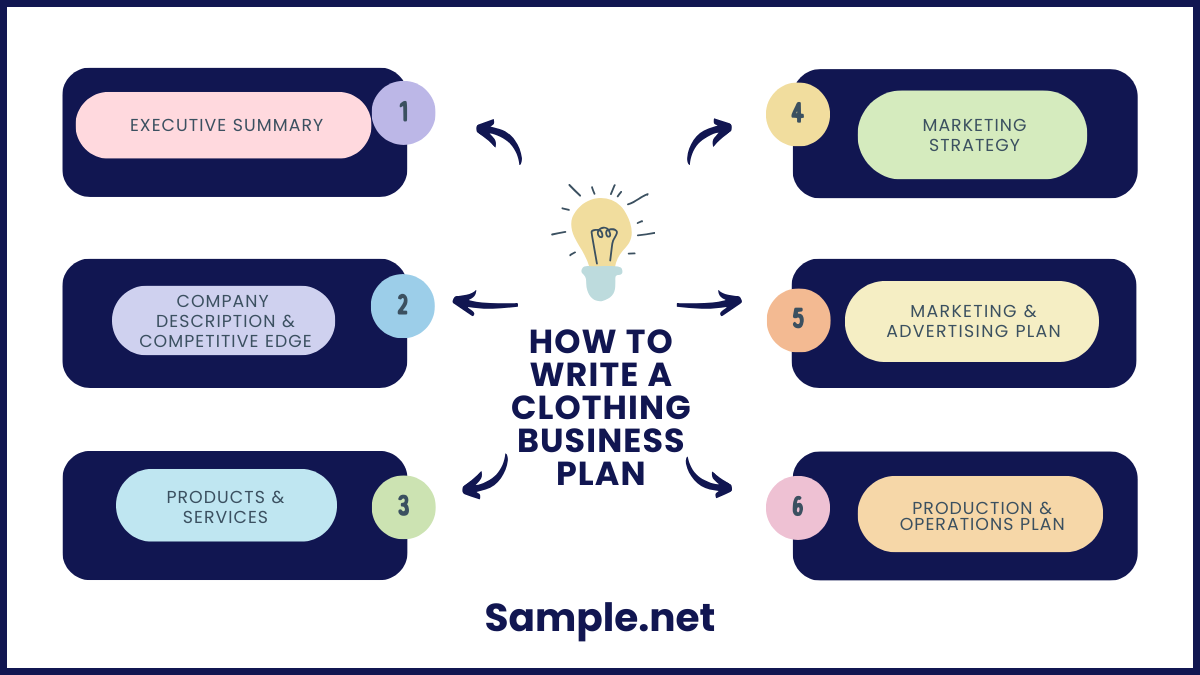
Some fashion business plans are exceedingly extensive, repetitive, and confusing. They are terms that seem elegant and business-like, but some information may just be repeating the same thing over and over again. Some may work on a business plan for six months to a year which is overly comprehensive and goes on for too long. Avoid the hassle with the guide this article provides. Not only will you be guided with each step but you can also see an example of a boutique business plan to observe the structure of the basic yet detailed clothing business plan.
Step 1: Write the Executive Summary
The Executive Summary is the first and most important section of your business plan because it provides an overview of the types of clothes you offer, identifies the potential market for your products, lists your mission statement, your qualifications to run a Clothing retail business plan, and details how your expertise will give you an advantage in your competitive industry. The clothing business plan executive summary should be between one and four pages long and written in straightforward English, without too much fashion industry jargon so that it is understandable to everybody.
Step 2: State Company Description and Competitive Edge
This step can also be considered as part of your clothing business plan introduction. Since your executive summary highlights your company’s goal and vision statement, your company description, which is the following element of your strategy, builds on your company’s competitive advantage. Explain the history of your Company, what motivated its establishment, and what special market demands it will meet by listing any unique methods you utilize in collecting, storing, or delivering your clothes. This is the spot to specify whether you cater to a certain demographic, such as certain body types or sizes, or if each outfit is personalized to the individual.
Step 3: Elaborate on your Products and Services
Describe your apparel lines as well as any other items or services you want to market. Describe the advantages that clients will receive by purchasing from you. Use this part to reassure the readers of your business plan that there are individuals who want to buy your product right now, and those future sales will only rise. Provide information about your clothing Store business plan designers or suppliers, as well as the costs of your outfits and any copyrights and patents your company possesses that acts as an additional competitive edge.
Step 4: Define Marketing Strategy
Analyze your company’s strengths, weaknesses, opportunities, and threats, a technique known as SWOT Analysis. Give specific details about the retail clothing industry in your area, including the stores with which you compete, your target market, how you plan to market to them, your sales distribution channels, such as in-store and online purchases, and the long-term viability of your competitive advantage.
Step 5: Add a Marketing and Advertising Plan
Describe how you intend to market your clothing to people looking for the items you sell. Show how your strategy will appeal to consumers in specific ways; your marketing efforts should be guided by your shopper’s demographics, such as age, education, hobbies, and geography. Consider investing in a strong web presence if your average consumer is 30 years old or younger. Your Marketing Plan will vary depending on your main target market, so this part will require you to do thorough research on what method is best for your desired target market.
Step 6: Draft your Production and Operations Plan
Develop profit projections for your shop, which will need some market research. Using income statements, cash flow statements, and balance sheets, anticipate your costs and revenues for the next five years. Estimate your break-even analysis or the point at which your garment costs and other expenditures equal your revenue, to show investors how many goods you need to sell to break even. The finance area is also where you may solicit funds from possible investors and show them how they will be used.
Tips for Starting a Clothing Business
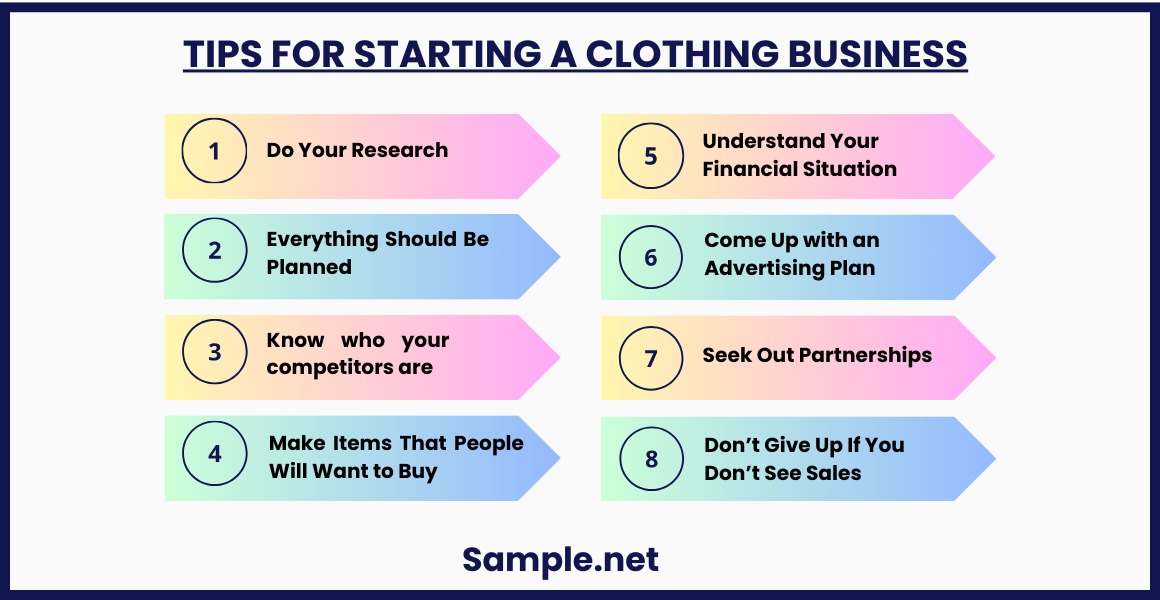
Nowadays, it pays to prepare before jumping into the deep end; with everyone from teenagers to grandmothers creating and selling their products and services, it has been demonstrated that a solid clothing business plan may help you build a profitable company. If you have been wanting to open a new clothing business, then check out the available clothing business plan examples found above. Additionally, if you are truly keen on developing a clothing business, then these tips can help you. Look no further, this is a curated list on how to launch a successful clothing line.
A clothing business plan is essential for launching, managing, and scaling a successful fashion brand. It defines the company’s goals, target market, financial strategy, and operational plans. By following a structured approach, you can identify potential challenges and devise strategies to overcome them. A strong plan also attracts investors and secures funding. For entrepreneurs in the fashion industry, a well-crafted business plan ensures sustained growth, profitability, and competitive advantage in a crowded marketplace.
FAQs
Is a clothing business profitable?
Profit margins for Retail clothing are typically between 4 and 13 percent. When these expenditures are taken into account, the profit earned by the clothing company is substantially lower, and clothes shops must sell a large number of products to continue in business. Time is a big factor in any business, you won’t be able to see right away a boost in your clothing sales. Take your time in setting up your clothing business and learn to improve your clothing sales as you gain experience being in the industry.
What are the different types of clothing businesses?
The clothing industry is one of the most profitable in the world, and there is always room for innovation in this field. There is a lot you can do, from creating new outfits to fixing existing ones. A vintage clothes business, a personal retail store, t-shirt printing and design, modifications and fabric restorations, and textile recycling are just a few examples. You can also see more on Clothing Line Business Plan.
How to find clothing suppliers?
Finding clothing suppliers may be difficult if you are new to the industry or are just starting. Be open to branching out of your comfort zone. Networking, forums, trade shows, and online databases, and contacting local shops are methods to find a suitable clothing supplier. Think of the internet as your friend, you will be able to find answers with ease and comprehensive search.
How long should a clothing business plan be?
A typical clothing business plan is around 20-30 pages. It depends on the level of detail, financial information, and target audience. Shorter versions are used for investor pitches.
How do I analyze the competition in the clothing industry?
Conduct a SWOT analysis (Strengths, Weaknesses, Opportunities, Threats) for your competitors. Research their product offerings, pricing, branding, customer reviews, and social media presence. Identify areas where you can stand out, like offering eco-friendly fabrics or unique designs. You can also see more on Retail Business Plan.
What are some common mistakes to avoid when creating a clothing business plan?
Avoid being too vague or over-optimistic with sales projections. Don’t neglect your competition or underestimate production costs. Ensure you provide clear financial details, operational strategies, and an action plan. Recheck the plan for grammatical errors, and keep the content professional and concise.
